Full disclosure: I don’t have chickens. My homeowner’s association prohibits them. Nor, before reading this book, did I particularly want a flock.
HOA rules aside, a couple of my neighbors raise these birds, and I just didn’t get the appeal.
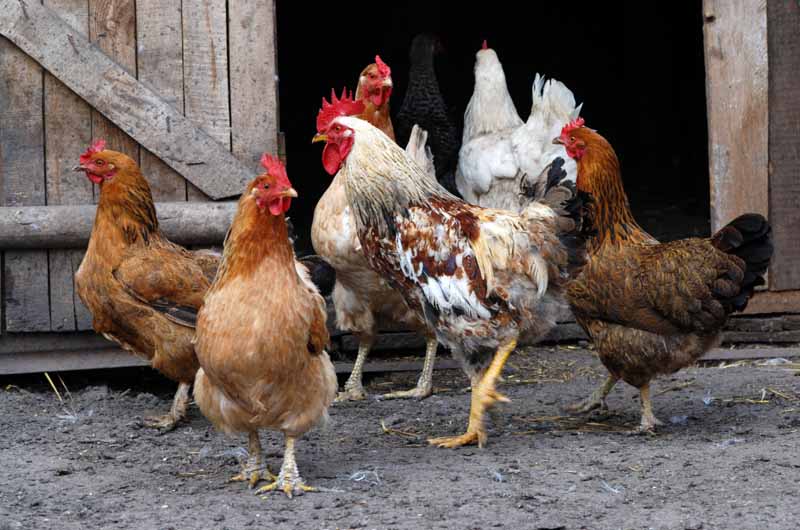
We link to vendors to help you find relevant products. If you buy from one of our links, we may earn a commission.
After reading Kathy Shea Mormino’s “The Chicken Chick’s Guide to Backyard Chickens,” however, I may be tempted to join my renegade neighbors in their illicit fowl-raising practices.
Subtitled “Simple Steps for Healthy, Happy Hens,” the book is an easy-to-read, occasionally humorous, and thorough exploration of caring for backyard fowl. The book is available from Amazon.

The Chicken Chick’s Guide to Backyard Chickens: Simple Steps for Healthy, Happy Hens
Mormino’s indisputable expertise in the subject matter emanates from the book’s pages, as does her equally unquestionable love for the birds. Her website is also packed with fowl info.
The book is attractively designed with splendid photographs by the author that showcase her inviting landscape and beautiful birds. The glossary and index confirm that this is more than a pretty book, however, cementing its utility as a reference for the hen-inclined.
Are These Birds Right for You?
Right off the bat, Mormino confronts the issue that many of us encounter in our towns and neighborhoods: These generous and even friendly birds are often illegal to keep.
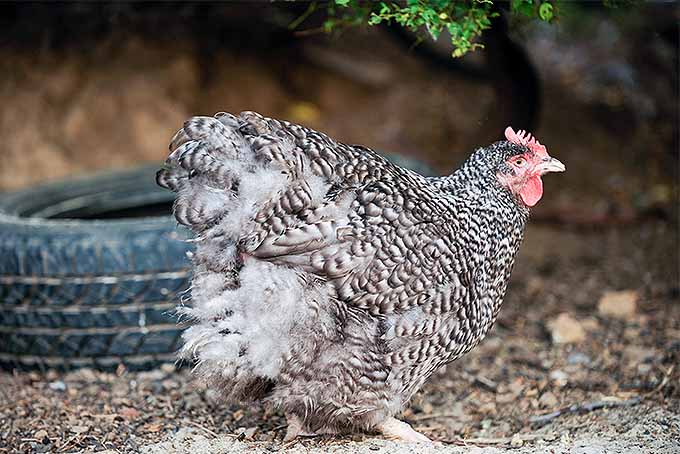
A thorough introductory chapter – based on Mormino’s own experience – encourages readers to confirm the legality of chicken keeping in their area, and suggests advocating for zoning code changes if necessary.
At the end of first chapter, Mormino presents a list of myths, which she convincingly debunks. Contrary to popular belief, for example, chickens are not dirty and smelly – they “are clean animals that spend hours every day meticulously preening to maintain good hygiene,” she writes.
It All Starts at Home
The soft-cover volume then moves to a very detailed chapter about housing hens. In “Housing Essentials,” she specifies dimensions and materials for coops and runs, offering numerous insider tips.
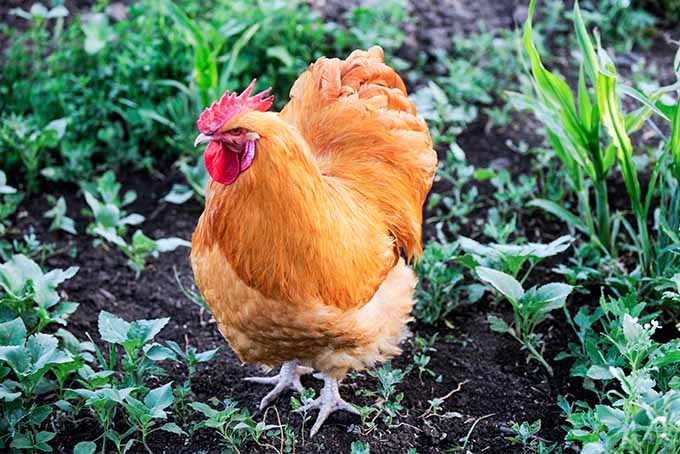
Incidentally, the tips in this book don’t come only from Mormino, a lawyer by training. Her beloved and oft-photographed Cochin hen Rachel offers wise tidbits, too, punctuating the tome in easy-to-digest green breakout boxes.
Sadly, Rachel died in September 2017 at age 8, which represents a typical lifespan for chickens, according to Mormino.
Subsequent chapters of the book address breed selection, caring for chicks, dietary requirements, predators and pests, health, seasonal considerations, and behavior.
Eggs-actly the Right Info
The book’s penultimate chapter is dedicated to – what else? – eggs. “Every day is Easter in the henhouse, but even the Easter Bunny would do a double take at some of the funky finds from our feathered friends,” Mormino writes.

Mormino offers a detailed explanation of how these fowl make eggs. She addresses shell color and describes egg oddities. She also answers any questions the reader might have about a drop in egg production.
Wondering how long hens produce eggs or whether it’s okay to eat fertilized eggs? The book explains all.
Colorful Landscape Elements
The volume concludes with a chapter that might be of particular interest to Gardener’s Path readers: landscaping with chickens.
An interesting tidbit from this section includes the fact that chickens “generally avoid eating plants that are poisonous to them or simply don’t consume them in quantities sufficient to cause harm.”
Mormino also suggests using container plantings in your chicken yard because “Things planted in the ground are enormously tempting to dig into and walk on,” she writes. “The higher up I plant things, the less likely they are to be destroyed by my feathered wrecking crew.”
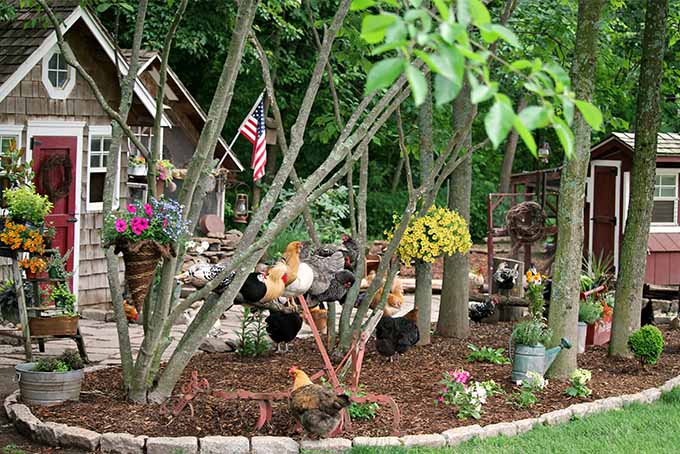
She also works fowl-friendly amenities into her Suffield, Connecticut, landscape. One of my favorite photos in the book shows a detached tree limb resting horizontally between two trees a few feet off the ground, and serving as a roost for her colorful yard birds.
She does not, however, discuss growing scratch for your birds, so be sure to read about that here. And check out our article about chickens in the garden, too.
Almost Perfect
There was one caveat to my thorough enjoyment of the book: Some of the material is repeated.
While reading the egg chapter, I got a deja vu feeling, and flipped back to the front of the book. Sure enough, material was duplicated – not precisely word for word, but closely enough that it was disconcerting to the editor in me.
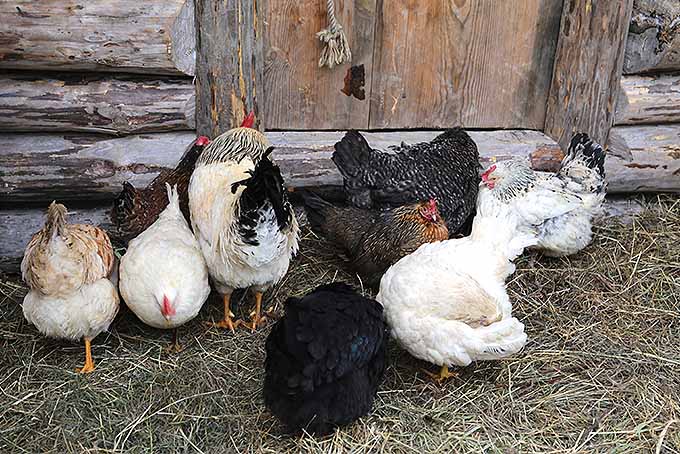
That aside, this book is a must-have for anyone considering adding a flock to their property. I’d bet even seasoned fowl farmers will find an interesting tidbit or two.
Mormino seems like a person who would be fun to sit down to coffee with, to chat with about pretty much anything – including, of course, her feathered friends – and that approachability shines through in this volume.
Are you a chicken farmer or a homesteader raising your own flock? Thinking of becoming one? Share your tips and tricks in the comments section below.
And if you are looking for more book recommendations, check out these reviews next:
- Book Review: Cultivating Harmony with Nancy Lawson’s The Humane Gardener
- Restoring Habitat with Charlotte Adelman and Bernard Schwartz’s Midwestern Native Shrubs and Trees
- Celebrating 40 Years: A Review of The Encyclopedia of Country Living
© Ask the Experts, LLC. ALL RIGHTS RESERVED. See our TOS for more details. Photo by Kathy Shea Mormino reprinted with permission. Product photo via Voyageur Press. Uncredited photos: Shutterstock. A review copy of the book was provided by the publisher.
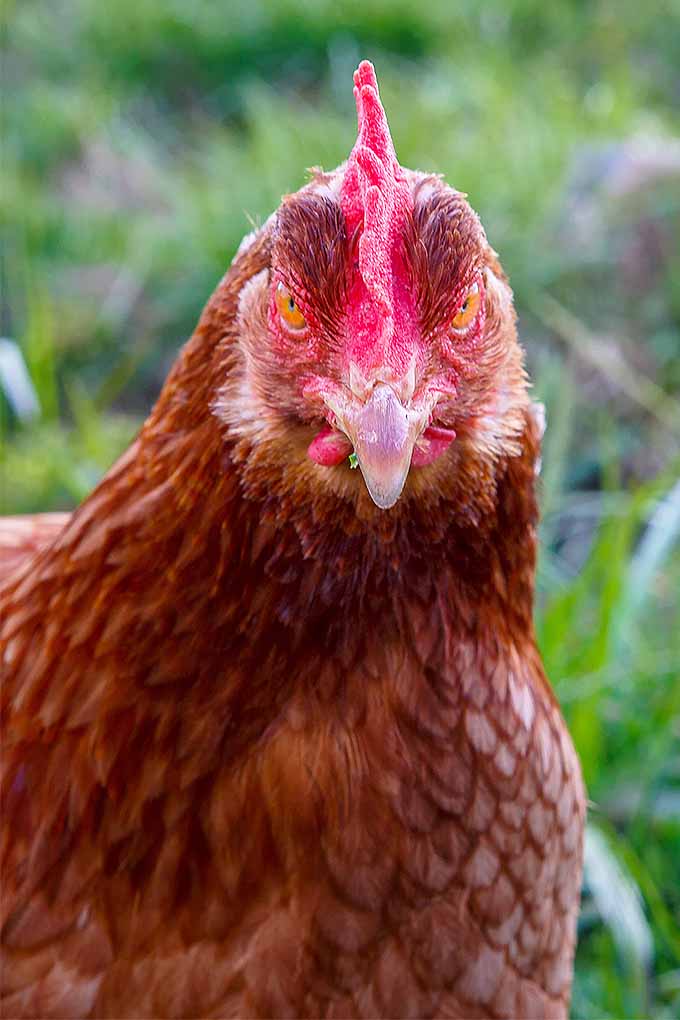
One thing I’ve learned over the past couple of years is that chickens are very gratifying to have around if you grow vegetables. They’ll pretty much eat anything green and nutritious, like kale, overgrown zucchini, or lettuce. This year, that’s become a real plus for me since I’m bartering veggies I grow with a friend of my husband’s in return for the occasional carton of free range eggs. Win win!